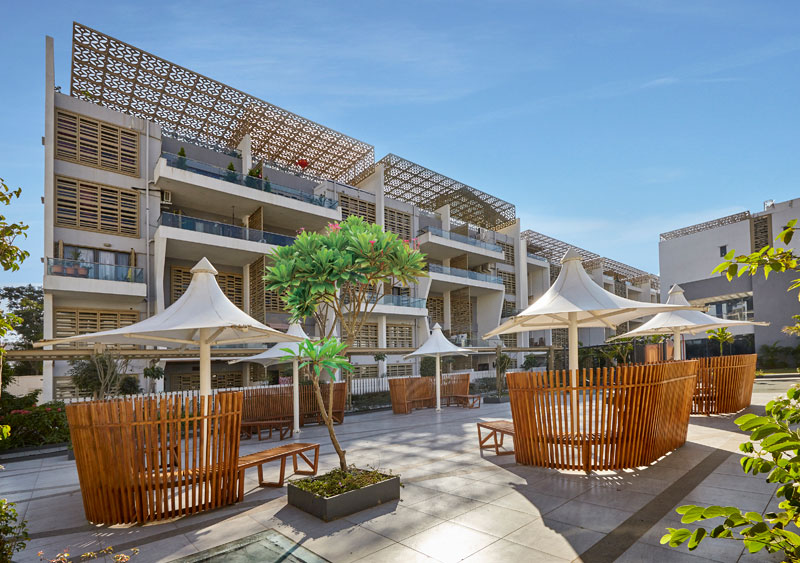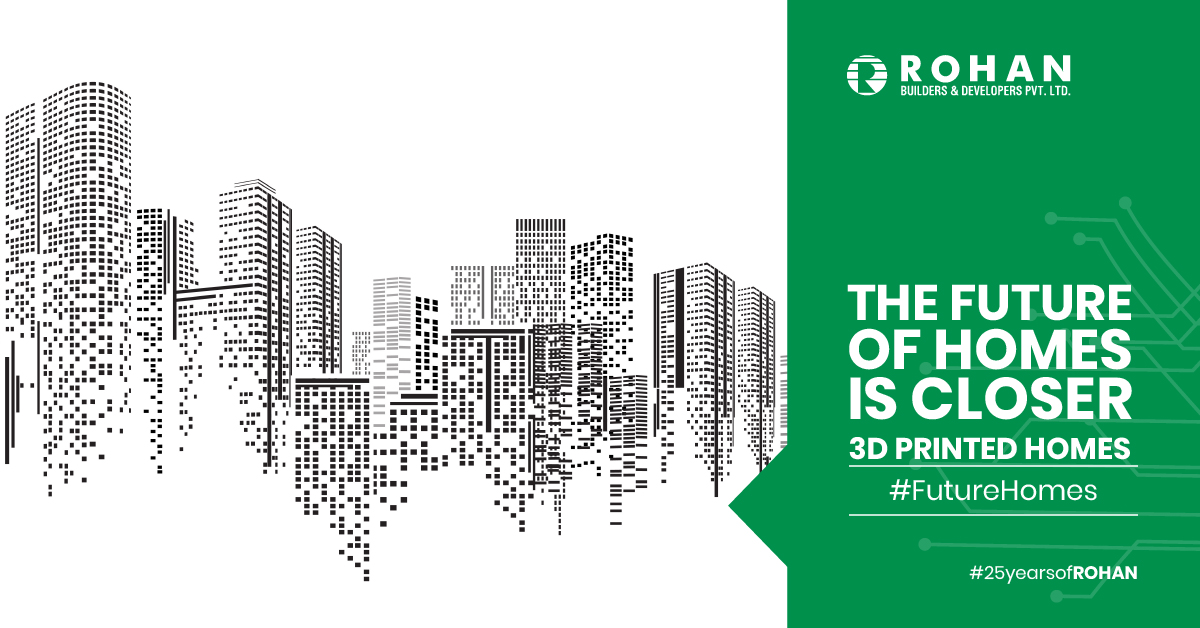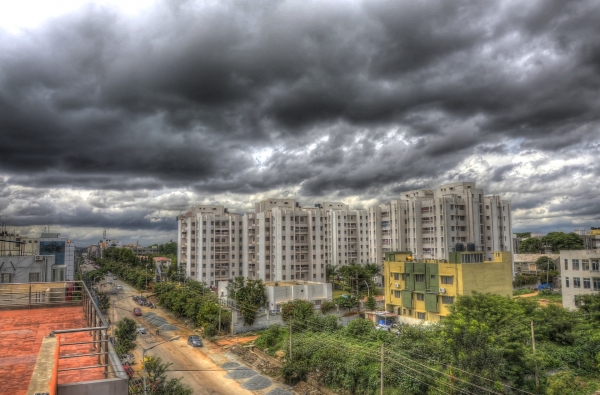Blog
Real Estate in India 2018 – Growth, Opportunity and Challenges

05 February 2018
The year 2017 has set an unexpected benchmark for the real estate sector of India. With the demonetization in the year 2016, the first quarter of 2017 had the real estate sector reeling along with the economy, with land sales reaching a point of stagnation due to the requirement of payments made in cash. By the time the markets were ready to stabilize, GST and RERA came into form which created an added tension amongst buyers and sellers alike. In anticipation of the final RERA notifications, buyers held back purchases. The year 2017 has seen changes in the attitude of buyers to pay a premium for long-standing well-known developers and more demand for 2 & 3 BHK homes with fewer compliance problems. Besides, the introduction of GST in July 2017 was intended to disassemble multiple tax systems. In the year 2017, around 1.6 lakh units only were sold out, which was a 30% drop in contrast with the year 2016.
However, the experts believe that the year 2018 will witness a new transitional phase for real estate in India. The market is expected to show signs of improvement after some and the reforms will ensure the real estate sector becoming a more buyer cordial market.
So, let us dive into what the year 2018 holds for the real estate market, especially the three big questions.
- What are the existing challenges of buying property in India?
- Confronting the Regulatory Pressure:
In 2017, we saw some regulatory standards by the administration which affected the real estate market, positively and negatively. So in 2018 as well, developers will confront the effect of RERA by limiting themselves to new development and concentrating more on finishing the ongoing projects. As the supply of ready-to-move-in properties will expand, builders will confront the challenge of finishing the task on a specified due date.
- The concept of Single Window Clearance:
The significant problem a real estate developer faces is the property clearance and as a rule, takes 18 to three years. The lion’s share of the work is to procure approvals from specialists who take a very long time to answer. Single Window Clearance is the greatest test faced by the developers. So actualizing this strategy won’t just cut down the project delay but additionally the cost of the task execution as well.
- To get a Home Loan Interest limit:
The home loan interest tax is the real issue imposed on the home buyers. The government needs to raise the limit to 5 lakh from the present 2 lakh for every annum. So this will surely give a big break to home buyers in saving cash on the home loan. The higher the interest on home loan fee, the lower the demand for property, causing a ripple impact. Thus, the financing of home loans is additionally viewed as a challenge to real estate builders.
- The GST Rate:
Since the foundation of GST, the real estate market has been confronting tremendous barrier because of high GST rate. As buying a home is an immense investment, the legislature ought to cut down the GST rate to urge home buyers to put resources and investment into new activities.
Of the considerable number of difficulties assessed by the real estate sector of India, just two issues have recently been tended to on a full scale; The annihilation of a mind-boggling tax structure with the usage of GST and tending to inventory pile-up by executing the RERA (Real Estate Regulatory Authority) bill.
Despite the fact that it will require some time for the impact of these progressions to appear, it has provided a ray of hope for the real estate sector
- Rising Input Cost:
The real estate industry is a capital and work focused sector, accordingly, an ascent in the cost of work makes issues in the development of the project in focus. Besides, uncalled for routine with regards to specific segments of merchants and concrete industry by raising the cost, makes issues in the completion of the project venture more prominent.
- Growth opportunities in buying a house in India
- Real Focus on Selling and Delivery:
In the year 2018, developers will concentrate on offering and finishing the current ventures within the due date. Henceforth, the year 2018 will witness significant deals and conveyance in the real estate market.
It is required for all the real estate ventures to be in coordination with the arrangements of RERA, which endeavors to ensure that projects are completed on time.
So, RERA ensures customers’ interests. It will be unthinkable for unreliable operators to be in the market and just the most-dedicated players will have the capacity to explore and growing the market. This will profit both the home buyers and the sellers alike in the long haul.
- Different Tax Incentives:
Government is doing its best to help the boost of ‘reasonable housing’ through different tax incentives and different changes. This will likewise accompany 4% of subsidy, additionally improving the methods of purchasing and offering of a home. As of not long ago, buyers and additionally developers were imposed with numerous duties, for example, service tax, VAT, and excise duty which shifted from state to state. The lack of clarity and high costs deterred them from investing in it. Nonetheless, with the current execution of a standard tax (GST of 12%), the situation is set to change soon.
- Past year changes to shape what’s to come:
There have been many changes set by the legislature, including RERA and GST which will influence the market in 2018 as well. For both, home buyers and builders, these changes will create a different outlook on how business is done. There were some unavoidable issues for home buyers when it came to investing in under-developed projects, but now with full transparency, home buyers and designers can have a simple business.
- Clean Capital:
Because of the absence of transparency in the area, it was hard to get a spotless capital from monetary foundations. In any case, circumstances are different since RERA and Demonetization have had an impact as there has been an entire change in the process of purchasing and offering of a home. Investors and monetary foundations have opened up the road for clean capital. This unquestionably demonstrates the positive picture in 2018.
- PMAY to take care of housing for all
The yearning design of the Prime Minister to construct homes for all by 2022 will definitely get a noteworthy change financially with $1.3 trillion. This will make 60 million new houses and 2 million occupations throughout the following 4-5 years. Each task is presently getting enrolled under PMAY conspire; the urban real estate segment will see a significant lift in 2018. Affordable housing could rise as the characterizing pattern in 2018.
The administration has expanded distribution under the Pradhan Mantri Awas Yojana plot. This won’t just urge home buyers to contribute yet, in addition, empower cooperation from private players to dispatch projects in this portion.
- Favorably low home interest:
The excess liquidity has driven the RBI to rejig the key loaning rates. Resultantly, the home advance loan costs that were recorded at around 9.5 percent per annum in 2016 have now been skimming in the range between 8.3-8.4 percent.
That makes for impressive savings in the EMI costs; empowering individuals to benefit from minimal home loans and turn into a mortgage holder. It is normal that the home advance rates will stay low for the following few quarters and may even descend further.
Considering the normal yearly rental yields at 5-6 percent, there isn’t much contrast between the expenses of renting a home and owning a home.
- Affordable housing plans:
The budget of 2017 had proposals that could benefit and boost the real estate sector in the year 2018. The focus was on affordable housing. One such initiative was to award the infrastructure status to affordable housing and the other was a 100 percent deduction for profits to an undertaking in affordable housing ventures for flats (30 square metre for metros and 60 square metres for other cities).
While it is too soon to check the general effect of how these motivations will have on the real estate market, it is most likely that in the long haul, the affordable housing sector is required to see positive traction. With builders encouraged to go into this portion, we can expect reestablished action in the affordable housing section and crisp supply to begin entering the market soon.
Middle-income home buyers have a lot of motivations to celebrate after the centre modified the carpet area of homes for the MIG category under the PMAY (Pradhan Mantri Awas Yojana) scheme. The middle-income buyers would now be able to possess a greater and better house.
- Price of real estate in India likely to rise or fall?
Residential prices will remain for the most part stable over the following couple of months. Over the recent months, there hasn’t been a huge plunge in costs to the extent that the primary market is worried; in any case, there has been some justification in the secondary market. Be that as it may, deals and new launches had enhanced in Q1, vs Q4 ’16, and there is a general recuperation in sight.
The year 2018 is probably not going to portray any value increase, nonetheless, experts believe that the current changes will boost the trust and certainty of the home buyers and the sales are probably going to rise in 2018.
The real estate market in 2018 is expected to indicate price levels on an equivalents scale when compared with those of 2017. With everything taken into account, the year 2018 will remain a decent time to purchase. It is normal that the market will see more alternatives in ready stock since more noteworthy number of project completions are to occur in the following year.
As of now, there has been a lack of new project launches because of the introduction of RERA, which could negatively affect the supply of land or real estate properties. The high demand, on the other hand, could imply that costs may increment later on because of the jumble in demand and supply. Cost increment will be at sensible levels, not at historical levels. Be that as it may, you never know: if the economy again develops at 9.5 percent, real estate costs may again increase. For the time being, exponential growth in prices is ruled out.
The outlook for the year 2018 is as follows.
Residential segment has been low in 2017 because of demonetization, GST and RERA. Deals backed off; general projects likewise declined. It created a great deal of liquidity crunch. The effect was felt more in NCR and Mumbai, however, the real estate industry has endured on the whole. The positive side is that the affordable housing segment is occurring.
Going ahead, the standpoint for the residential sector in 2018 is extremely idealistic. Supply is coming in the affordable housing segment, which is the place where most of the demand is coming from. As the economy picks up, the development from rural to urban will quicken. So there will be a significantly increased demand for houses. Be that as it may, the economy needs to develop.
To sum it up, 2018 will pose a few difficulties for the real estate sector to the extent at which home deals and costs are concerned. Builders will turn out to be more acquainted with GST and RERA and this should enable them to design their projects better.
Home sales may remain weak. Property costs may be under strain due to high unsold inventory and even more pressure in the luxury housing segment in places like NCR and Mumbai. Real estate Investment Trusts, which were abundantly anticipated in 2017, did not take off amid the year in view of confusion over GST and other regulatory issues. We trust that once the confusion clears, we will see an increase in the opportunities available for the real estate in India, at some point in late 2018 or mid-2019.
TOP Blog
A Note On West Pune’s Infrastructure Developments

12 December 2022
Western Pune includes the suburbs of Baner, Aundh, Balewadi and Hinjawadi among others. Baner and Aund...
Read More
Clean Bengaluru Message by Rohan Builders Plogging Party

20 February 2019
A "Clean Bengaluru" message was unequivocally reaffirmed by Rohan Builders, sixty enthusiastic student...
Read More
Future homes – 3D printing in Construction & Real estate industry.

20 February 2019
Two events, small in bearing yet big on viable impact have occurred very recently in the construction ...
Read More
Hennur Road – The housing location of pride in north Bangalore

27 October 2017
For someone tracking the growth of the city (or megacity) of Bangalore over the years, the last two de...
Read More
A Note On West Pune’s Infrastructure Developments

12 December 2022
Western Pune includes the suburbs of Baner, Aundh, Balewadi and Hinjawadi among others. Baner and Aund...
Read More
Clean Bengaluru Message by Rohan Builders Plogging Party

20 February 2019
A "Clean Bengaluru" message was unequivocally reaffirmed by Rohan Builders, sixty enthusiastic student...
Read More
Future homes – 3D printing in Construction & Real estate industry.

20 February 2019
Two events, small in bearing yet big on viable impact have occurred very recently in the construction ...
Read More
Hennur Road – The housing location of pride in north Bangalore

27 October 2017
For someone tracking the growth of the city (or megacity) of Bangalore over the years, the last two de...
Read More

 +91
+91 +672
+672 +82
+82